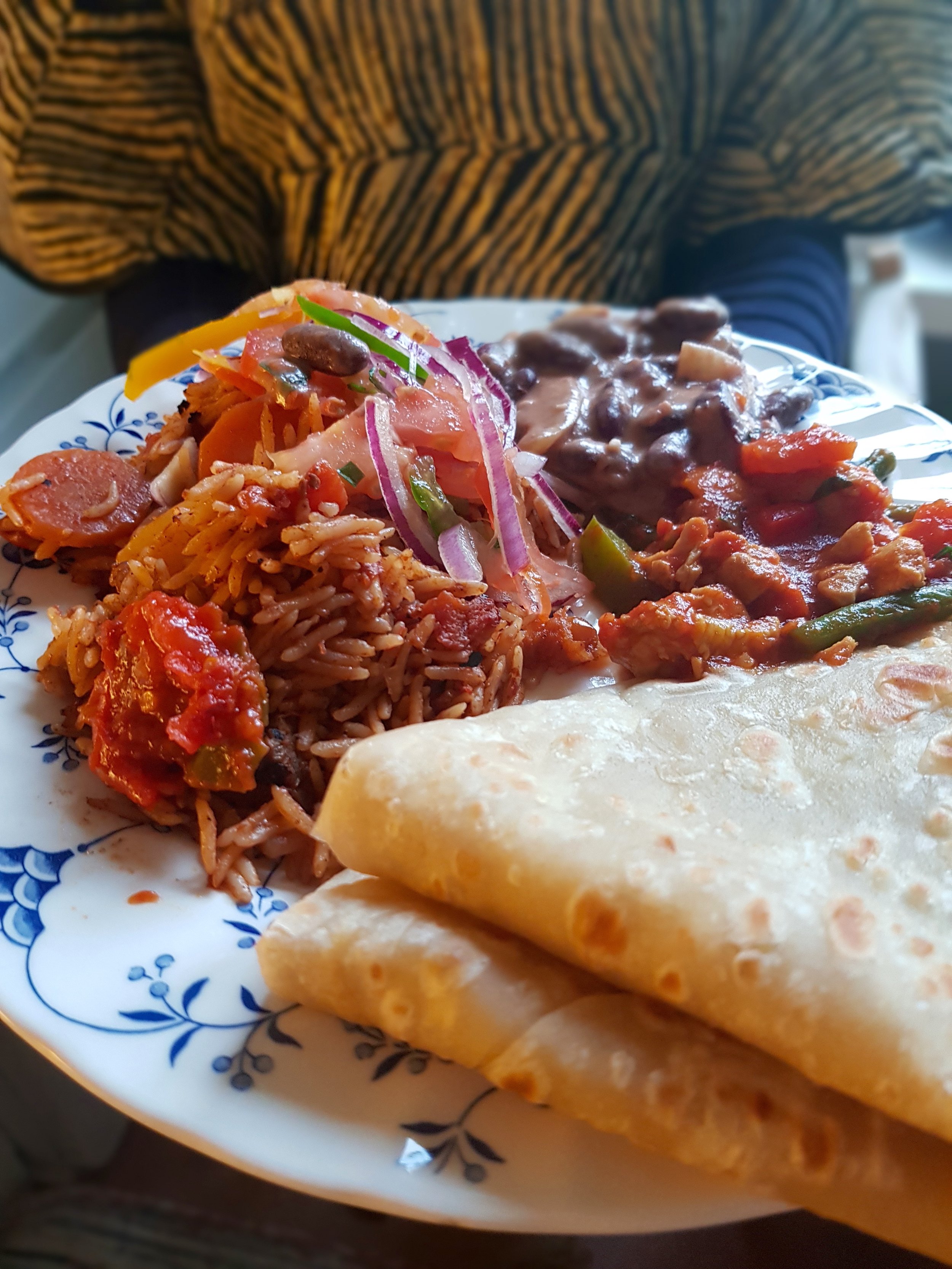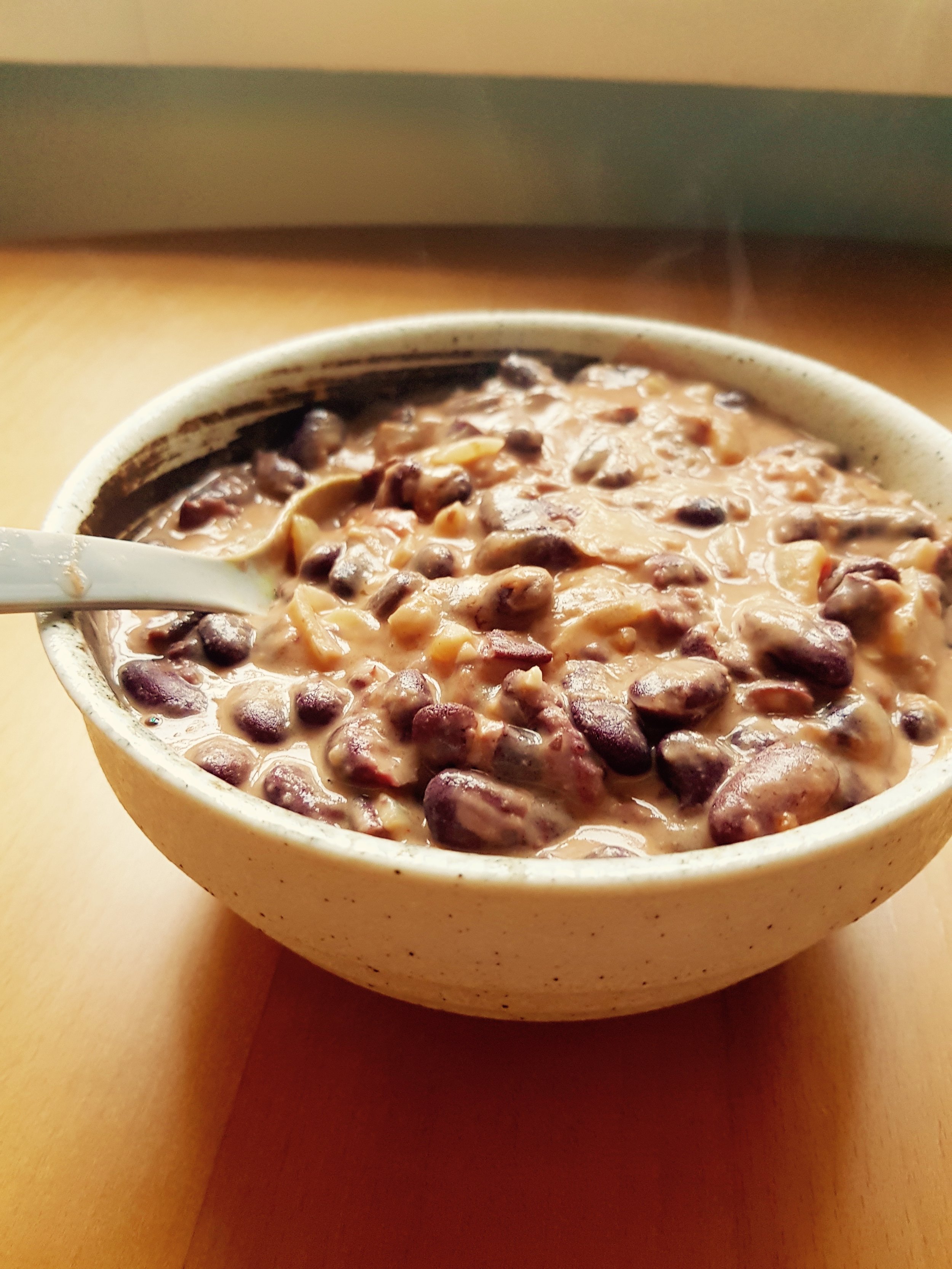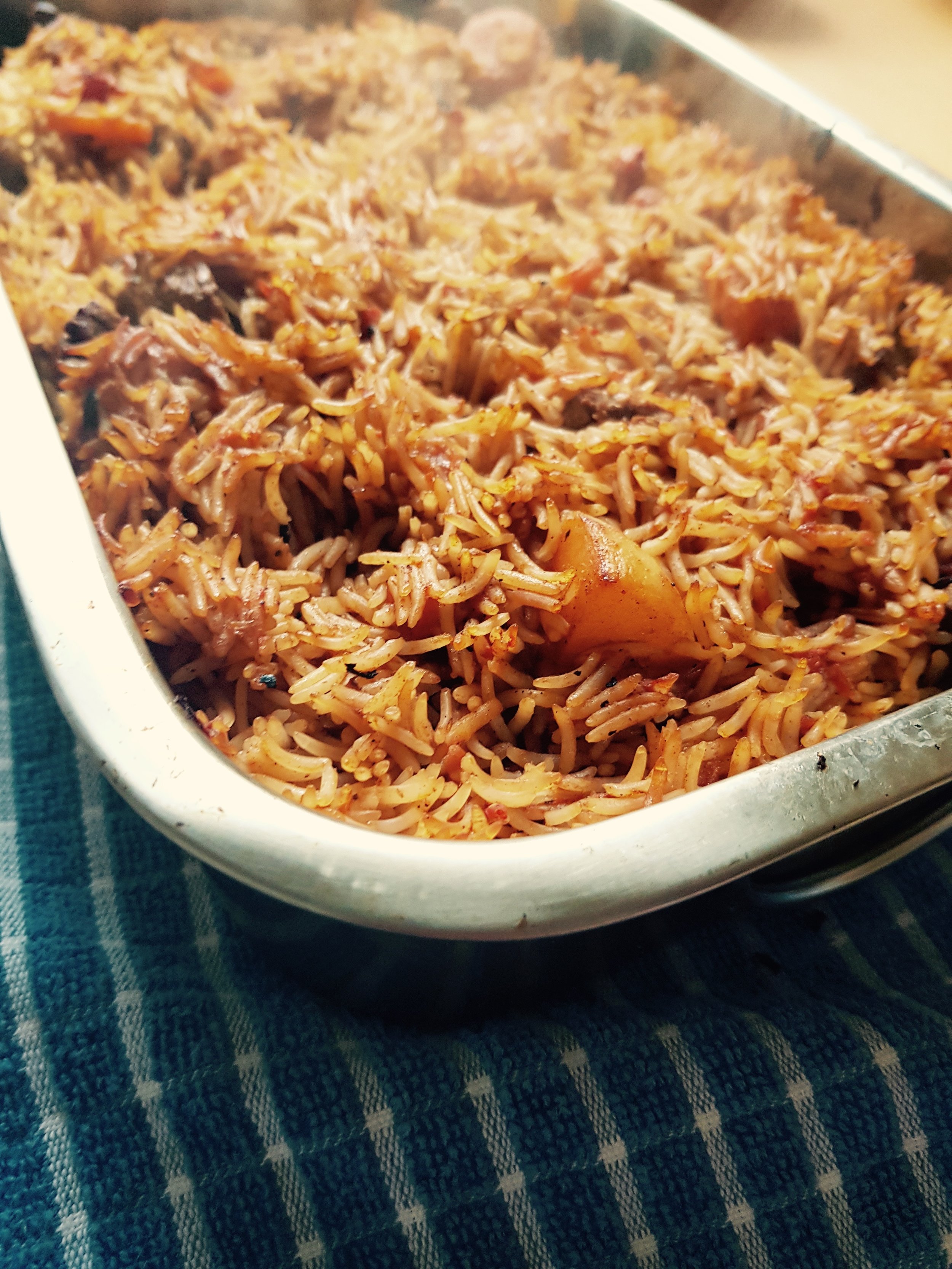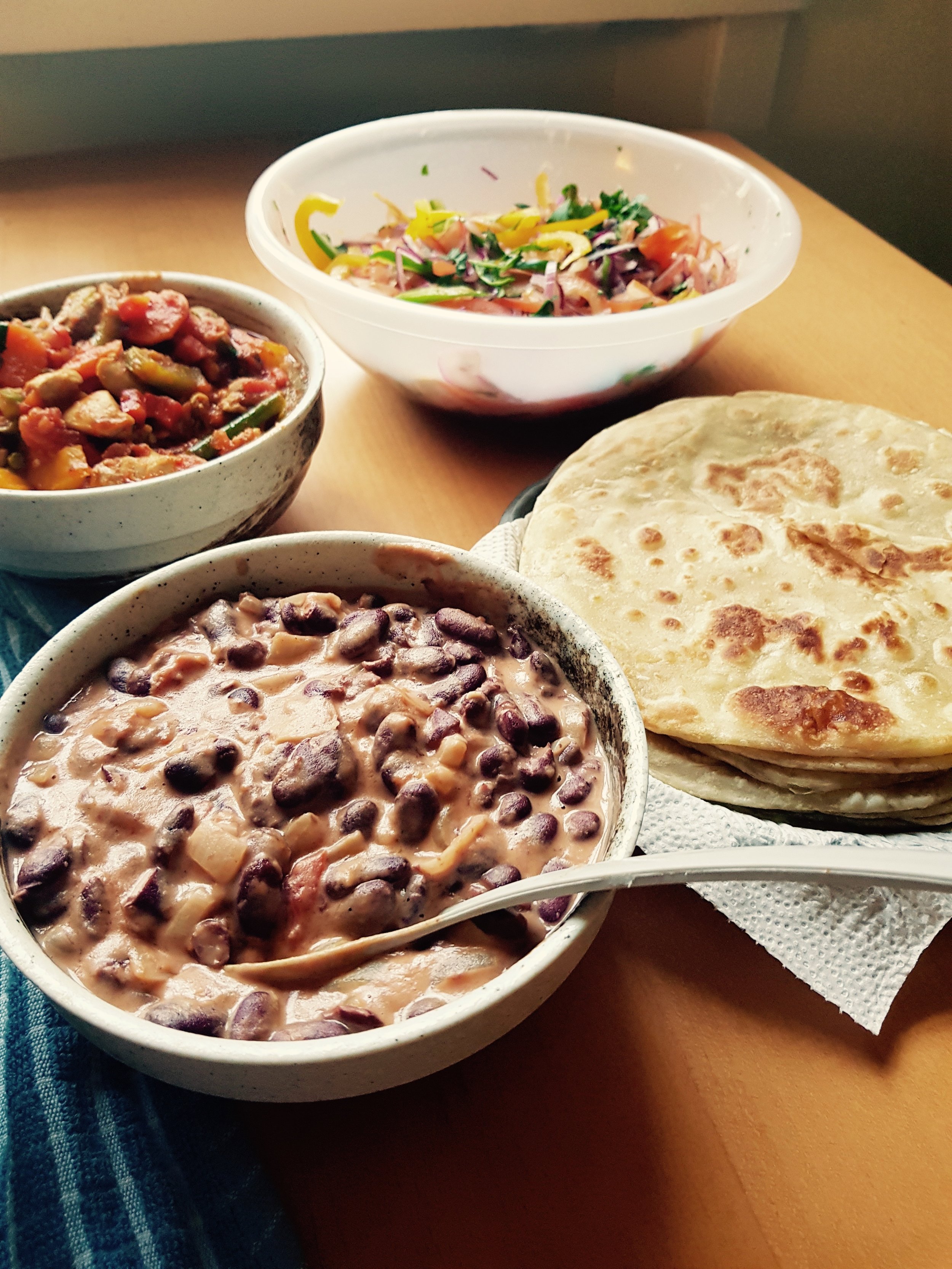Kenya: A food safari of epic proportions
Hello again and welcome back, Kryddhyllan friends! First of all, our apologies for the somewhat radio silence these past few weeks. We realize that we’ve been a bit off the radar, but we promise that it’s with good reason (if you guessed food-related, you’re completely right). Last month, we’ve had our hands full with trying new dishes from several very exciting corners of the globe, and even managed to squeeze in a faster-than-lightning food-filled excursion (let’s call it a work-related trip, shall we?) to the lovely island of Hong Kong (more on than soon to come, keep your eyes peeled). But rewind a little bit, back to the first week of April. The mercury was slowing starting to rise, the days were finally getting longer, and we had the wonderful opportunity to meet up with this week’s guest, Yvonne. Hailing from the beautiful nation of Kenya, Yvonne moved to Stockholm last year, after several years of calling Japan and the UK home.
Yvonne welcomed us to her lovely Södermalm flat, where we soon got to work prepping the feast for that evening. Luckily for us, we were equipped with a team of not two, not three, but 5 expert choppers, which definitely came in handy in preparing the various dishes. Our head chef Yvonne is from Mombasa, which just so happens to be the oldest and second largest city in Kenya. The role that this port town has played in history is definitely reflected in its cuisine, which features influences not only from the rest of Kenya and neighbouring countries, but even from trade partners from the East. Thanks to these diverse actors, the cuisine has been transformed into a beautiful mashup of some of the tastiest favourites from both Kenyan and Indian kitchens (chapati, we’re looking at you!). Read on to find out how you can impress your dinner guests with this finger-licking (literally, utensils are a no-go on this one) Kenyan feast:
“It’s too creamy, there’s all sorts of mayo and cream and you’re thinking why do they need to be here all at the same time?”














Recipes for a Kenyan delight
Serve with: tea (chai tea to be more specific or tamarind juice, an oh-so sour but delicious drink (to be enjoyed in a smaller glass though, you might not want to go big on this one).
Listen to: The heart-throb that is Diamond Platnumz was keeping us pumped up throughout the whole dinner. Find here on Spotify
Chapati
800g + of flour (wheat)
1 tsp salt
1.5 tbsp olive oil (plus more for frying)
About 1.5 dl+ of hot water (about body temperature, or as Yvonne put it: “as hot as you can handle”)
In a large bowl mix flour and salt together.
Drizzle the 1.5 tbsp of olive oil over the mixture and mix lightly with your fingers so that it becomes “crumbly”
Add in water (a few tbsp at a time) and take the flour into the water so that all of it will gradually be moist (if you want you can put the moistened flour aside and keep working with the dry flour in the bowl.
Once all the water has been added and the flour is moist start kneading. Add some olive oil to your hands to help make the dough smooth.
Cut the dough into palm-sized pieces and roll into balls.
On a dry, flat surface spread som flour and then take each ball and flatten it with a rolling pin (it should be a few mm thick).
Drizzle some olive oil on one side and spread it with the backside of a spoon or something similar, so that the surface is covered in olive oil.
Cut through the middle of the dough (but not splitting it in half): you want to achieve a pac-man with closed mouth look!.
From one end of the dough, start rolling it together into a cone until the other end (see photo). Push the top of the cone down into the middle so that you push the edges into the middle. This serves to lock in the oil.
Repeat this with all the dough balls and set aside under a towel for at least 30 minutes.
Roll out each dough again with a rolling pin (about 2 mm+ thick) and fry in a dry pan. Once the chapati starts to “bubble” put some olive oil on each side and flip it over, so that it gets fried on each side. Roast each side until slightly browned.
Pilau (rice stew with meat and potatoes)
4 potatoes, peeled and cut into clefts
1, 5 yellow onion, finely chopped
1 tbsp tomato paste
2 tomatoes, sliced
4 garlic cloves, finely chopped
A few tbsp of olive oil
400 g of beef (stew pieces)
A few cm (50 g) of fresh ginger, grated
1 tbsp pilau masala
1 tsp dry coriander
1 tsp masala
1 tsp curry powder
About 500 g of basmati rice (or 6 dl)
1 tsp salt
2 cans (à 400g) of crushed tomatoes
1 carrot, sliced
1 tsp tikka masala
1 tsp paprika
I a large pot, heat olive oil on medium heat and fry the onion with tomato paste.
Rinse the beef and let it dry (you can wipe it gently with a kitchen towel or something similar).
Add in garlic and ginger into the pot and keep stirring so it doesn’t burn.
Add all the spices and pieces of beef and stir together. Let it fry for a few minutes until the beef is starting to brown.
Add in potatoes to the pot.
Add the carrot slices and two cans of crushed tomatoes into the put, and maybe a bit of water (a few tbsp).
On medium heat, let the pot simmer covered with a lid.
After about 10 minutes, keep adding in some water to help the stew cook and some extra spices (tikka masala and paprika) and salt. If you want you can add in a bit of chilli (dried) - our host did this and we did not complain!
Rinse the rice and then add into pot.
Add some extra water to the stew to help the rice cook. Raise the heat slightly and let simmer for another 10 minutes. Make sure to add in water from time to time if needed.
Once the rice has been cooked it is ready to be served!
Kachumbari (tomato and onion salad)
2 red onions, cut in half and then thinly (SUPER thinly) sliced
Water and salt (to store the onion)
1.5 bell peppers (of varying colours) very thinly sliced lengthwise and then down the middle
6 tomatoes (and yes, here they are also really thinly sliced)
Half a green chili (seeds removed), finely chopped
Salt
Fresh lemon juice from one lemon
About a handful fresh coriander, finely chopped.
Once the onions have been chopped out them in a bowl with salt water and let them sit while cutting the remaining veggies. This is to “ease” the flavour a bit according to our host. Once they have sat there for a bit, rub the onion with your hands to get rid of the “mucus-y feel”.
Add in all the veggies and mix together with lemon juice, salt and fresh coriander.
Put in fridge before serving since it it better served cool!
Chicken stew
1,5 yellow onions
About 75 g green french beans (haricout verts), cut in half (with ends cut off)
1.5 bell peppers (various colours), sliced lengthwise and cut in half
500g chicken thigh pieces, cut into stew sized pieces
Olive oil (a few tbsp)
2 cloves garlic, grated
25g fresh ginger (about 1 cm), grated
1 carrot, sliced
I can crushed tomatoes (400g)
1 tsp salt
1 tsp paprika
1 tsp curry powder
1 tsp garlic powder
½ tsp turmeric
Chilli spice (if you want)
A handful of chopped, fresh coriander
In a large pot, fry onions in olive oil on medium heat until onion is slightly translucent.
Add grated garlic and ginger, together with the chicken and carrots.
Add the spices, salt and crushed tomatoes.
Let simmer on medium heat for about 5 minutes.
Add the green beans and stir the stew. Add bell peppers and keep stirring.
Flavour with salt to taste and add some tbsp of water (depending on how thick you want it).
Serve with some fresh coriander on top, YUM!
Maharagwe ya nazi (Beans in coconut stew)
½ yellow onion, chopped
A few tbsp olive oil
2 cans of red kidney beans (rinsed)
1 tsp garlic powder.
2 tbsp crushed tomatoes
1 can coconut milk (400 ml)
A dash of curry powder
A dash of paprika
1 bay leaf (dried)
Salt
3 pieces of dried cardamom seeds (slightly crushed to release the flavour)
On medium heat, fry onion in olive oil in a large pot. Add in garlic powder. Let the mixture fry for about a minute.
Add in beans (drained and rinsed) and crushed tomatoes and coconut milk.
Increase the heat and let simmer for a few minutes
Add spices, salt and bay leaf and let sit for a few minutes - easy as a pancake as one says in Swedish!
Interview Time
Kryddhyllan: What is your favorite food from home?
Yvonne: I like ugali. That’s our national food, I would say. Ugali with meat. Usually it’s with meat and the Kachumbari that we served today. So it’s very much like home for me.
Kryddhyllan: Is that why it’s your favorite?
Yvonne: Yeah, I mean first of all it tastes really good, and then it always reminds me of holidays, especially the grilled meat. Often you make it during festivals and you have family around and you have a goat or a cow and you kill it and grill it. You slaughter it, I should say *laughs.
Kryddhyllan: You said that with such a smile, killing a goat and grilling it. Sounds fab.
Yvonne: *laughs. The fun part is not the killing of course, it’s just the whole community and I remember growing up it was my uncles that would do this grilling so that was really fun, I have fond memories of that.
Kryddhyllan: Aw, beautiful. What is it that brought you to Sweden?
Yvonne: Work, so first I was working in the UK, and was only going to be able to stay for a year because those are the rules if you go initially short term, so after that I figured I could back to Japan or go somewhere else. And then I got a call, one of my HR managers asked me if I was interested in Sweden and I said yeah absolutely. So here I am.
Kryddhyllan: Nice! And what are your favorite dishes since moving here?
Yvonne: In Sweden? Hmmm…. Favorite Swedish dishes. I like the lax, the salmon, it’s really good. It’s not pickled, it’s…
Kryddhyllan: Gravad?
Yvonne: Sure, I like that. I like pickled herring as well. It’s so perfectly sour and it’s really good, I really like that.
Kryddhyllan: Awesome, so you look forward to all Swedish holidays.
Yvonne: Absolutely, I’m just like “give me your pickled herring!” *Laughs.
Kryddhyllan: Before you came here did you know anything about Swedish food?
Yvonne: Maybe like a year ago yes, but before that, way, way before? No. My image of Swedish food was obviously the meatballs, but also probably a lot of seafood. I always expected a lot of seafood. I also expected that it was mild food, I guess?
Kryddhyllan: That’s a pretty good image, it pretty much sums it up! What would you say is the best and worst thing about Swedish food?
Yvonne: Hmm… Best thing is it’s mildness and that it’s quite healthy. You rarely have deep fried stuff, so that’s good for me, trying to be healthy. The mildness is good and bad. Sometimes I want a kick and then I find it too mild. The worst thing is that it’s too creamy, there’s all sorts of mayo and cream and you’re thinking why do they need to be here all at the same time? That bothers me, but quite generally I like Swedish food.
Kryddhyllan: And if you had to pick one type of food to eat for the rest of your life, what would it be and why?
Yvonne: Forever and ever?
Kryddhyllan: Yeah.
Yvonne: Then it would be fruit. I would eat fruit forever and ever I think. Or meat. Maybe I would eat meat. Fruit and meat. Can I pick both?
Kryddhyllan: It can also be a category of food. Some people have picked certain types of cuisines.
Yvonne: Then I would go for Kenyan cuisine I guess. At least I know what to expect *laughs. But no, I’d pick fruit.
Kryddhyllan: And if you could only pick one spice to flavor your food for the rest of your life, what would it be?
Yvonne: Salt? Or chili. I would pick chili.
Kryddhyllan: Chili or salt?
Yvonne: Ok, no salt. I would pick salt.
Kryddhyllan: There is no life without salt.
Yvonne: Exactly. But if the food was already salted I would pick chili.
Kryddhyllan: We did discuss last time that salt is technically a mineral and not a spice. But that’s getting technical and we’re not scientists. What’s the best meal you’ve ever had?
Yvonne: Ever? I’ve had a lot of good meals. I’ve had a lot of good meals. I can’t speak for the best one. Can I say a drink? Ok no, I remember a meal I had in Greece about two, three years ago. Usually I dislike olives, but this dish was olives chopped in really small pieces and it came with really good bread and really good wine. It was so good.
Kryddhyllan: Oh, like tapenade?
Yvonne: It was so good, I always remember that. Even my husband, who never remembers any food, remembers that. It was a really good meal.
Kryddhyllan: Sounds magical. What is your favorite restaurant at the moment?
Yvonne: To be practical I would say Maestro in Södermalm. It’s a Greek place and it’s so good. It’s behind the big Ica on Ringvägen. Ringvägen 82. I even remember the address. It’s not very big, it’s more of a home restaurant. I love it. And for meatballs I always go to Pelikan. The ambiance is so beautiful. They also have this huge leg of lamb that is quite intimidating, like “is this for me”?




